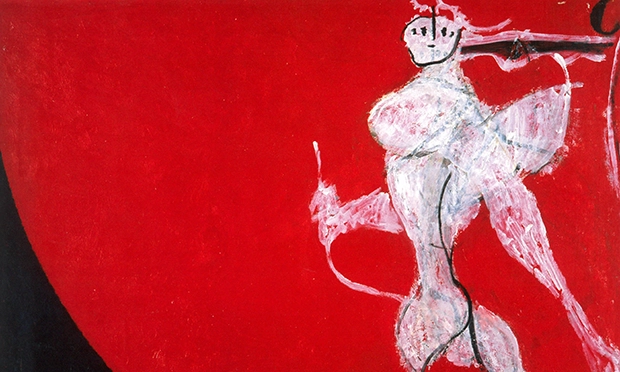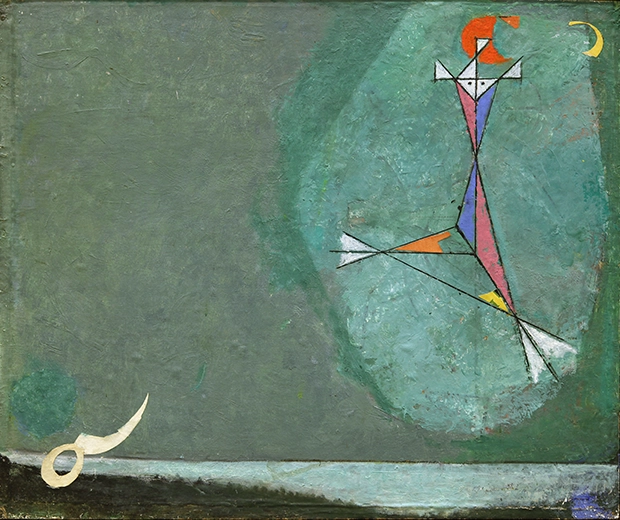Osvaldo Licini: Rebellious Angel, Estorick Collection, exhibition review: ‘Playful, whimsical and very moving’

Rebellious Angel. Image: courtesy Galleria d’Arte Contemporanea ‘Osvaldo Licini’, Ascoli Piceno
Osvaldo Licini is an under-appreciated star of early 20th-century art, and a new exhibition at the Estorick Collection sheds welcome light on his captivating oeuvre.
The first UK show devoted entirely to the painter traces his journey from post-impressionist-style representation to abstraction and back again to figuration, bringing together a grand selection of work from the 1920s through to the end of the artist’s life in the late 1950s.
A circuitous path brought Licini to the explosion of lyrical fantasy in the 1940s and 1950s for which he is best known.
The background to this journey was his immersion in the artistic scene of Paris during the early years of the century, after he was invalided out of the Italian army in 1917 at the age of 23.
He then joined the Italian Futurist movement in the 1930s before fleeing fascism and seeking solace in the countryside of his native Marche region during the 1940s.
Licini was above all a profoundly humanist artist, playful and sensual. Faces and human forms are themes that wend their way through his various styles.
Even his most abstract works often include representations of the human visage in various guises, ‘tasting’, ‘biting’, or ‘smoking’.

Angel of Santa Rosa. Image: courtesy Lorenzelli Arte, Milan
On several canvasses, features are depicted with numerals; in others they are carved of stark geometric forms.
But the human form is virtually always present in his work.
In 1935 during the height of his abstract period, Licini is on record as describing painting as “an irrational art, in which fantasy and imagination – that is to say, poetry – predominate”.
As the years went by, the poetic elements of his work came increasingly to the fore, and the aptness of this description became even more apparent.
Following his period of wartime hibernation, the artist cultivated his own style of ‘fantastical figuration’ and a stable of allegorical figures.
These include a large-testicled ‘rebellious angel’ and the female character he dubbed ‘Amalassunta’, which populate his colourful canvases of the 1940s and 1950s.
This is a very personal ensemble of symbolic forms, but also with wide resonance for their grace and wit.
For a flight of fancy or just a poetic pause in the working day, don’t miss the opportunity to immerse yourself in Licini’s playful, whimsical and very moving world.
Osvaldo Licini: Rebellious Angel runs until 10 September at Estorick Collection, 39A Canonbury Square, N1 2AN.
